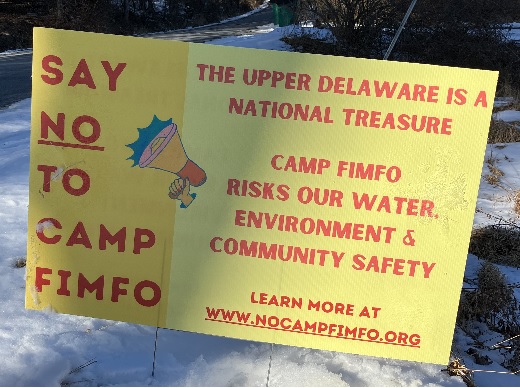Products and Chemicals Used in Fracturing
February 2, 2009U.S. Gas Drilling Boom Stirs Water Worries
February 27, 2009By SANDY LONG, The River Reporter
SUSQUEHANNA COUNTY, PA — It wasn’t exactly a happy new year for Norma Fiorentino, a resident of Dimock whose well exploded on January 1, shattering the cement casing atop the structure and leaving the retiree without water.
Fiorentino has been lugging jugs of water since the explosion, until recently, when Houston-based Cabot Oil and Gas installed a temporary alternative water source. Cabot has been drilling in the area as it develops the Marcellus Shale, believed to harbor immense reserves of natural gas.
The Pennsylvania Department of Environmental Protection (DEP) is investigating the explosion, which is believed to have been caused by a buildup of natural gas (the main componenet of which is methane) in the well, ignited by a spark from the well’s pump. The DEP has also assessed wells and living space at more than 20 residences in the Carter Road area and found elevated natural gas levels in nine water wells, though not within the homes.
Four of the wells have tested above the action level of 25 parts per million, a level at which the hazard of an explosion in areas where vapors can accumulate, such as laundry rooms, dishwashers and showers, becomes a threat. Other than the risk of explosion, Mark Carmon, a spokesman for the DEP, said, “We’re not aware of, or have seen, any health-related issues associated with methane dissolved in water.”
According to a DEP news release, the gas is “not at levels that pose a risk of danger.” However, the news release also specifies that, “Drinking water standard limitations have not been established for natural gas and associated health risks have not been identified.”
“This is an ongoing process and we will continue to evaluate and investigate areas around homes and wells,” said Department of Environmental Protection Northeast Regional Director Mike Bedrin.
The DEP is using a diagnostic procedure called isotopic analysis to sample gas from two nearby gas wells, a pipeline and two water wells to determine the source of the migrating gas. According to the DEP, isotopic analysis compares the chemistry of the gas from the various sources to determine if there are chemical similarities.
Initial results from the analysis have ruled out the possibility that the gas is “microbial nuisance gas,” commonly encountered in shallower formations. According to Carmon, tests show it to be “productive gas” from deeper formations. “We don’t yet know what formation we’re dealing with,” Carmon said, adding that the methane could be migrating from the Devonian Shale, which rests above the Marcellus Shale.
Knowing which formation the gas originates from will help to determine how the gas migrated to the individual wells. Additional tests have been conducted and results are expected within the upcoming week.
Carmon also said that DEP officials are keeping an ongoing presence in the area, talking to the residents and providing tips on venting wells and rooms. The agency is also contacting the companies that drilled the private wells to learn more about their construction and the geology of the area.
While not assuming responsibility for the contamination, Cabot has provided alternative temporary water supplies to four homes in the rural community, located roughly 25 miles north of Scranton. “We’ve asked Cabot to vent several wells and they’ve done that,” said Carmon. “So far, they’ve been very cooperative.”
No determination has yet been made as to whether the presence of the methane is a direct result of the drilling. Carmon said the results of the tests will help to determine the next steps taken by the DEP. The Northeast regional office is located in Wilkes-Barre, PA and can be reached at 570/826-2511.
Information provided to Dimock residents from the DEP advises residents to “be aware of the potential dangers of the accumulation of coal-bed methane, or natural gas, in their water wells. High concentrations in water wells, well enclosures and other confined spaces could cause an explosion.
“Methane [a colorless and odorless gas] migrates from areas of high pressure to areas of low pressure. Mining and well drilling operations can affect the pressure in the subsurface and cause the migration of methane to areas of lower pressure such as shallow aquifers and water wells used as water supplies. Gas migration can also be influenced by an increase or decrease in the water level of an aquifer.
“Active underground mining operations can lower groundwater levels, reducing pressure in aquifers occurring above and adjacent to the area of coal extraction. This reduction in pressure can allow gases within the overlying rock layers to migrate into nearby wells.”
According to the fact sheet from DEP, contaminated wells can be vented to avoid the possibility of methane accumulating in homes or well structures. For methane already dissolved in water, venting is ineffective and requires the installation of a water aeration system.



